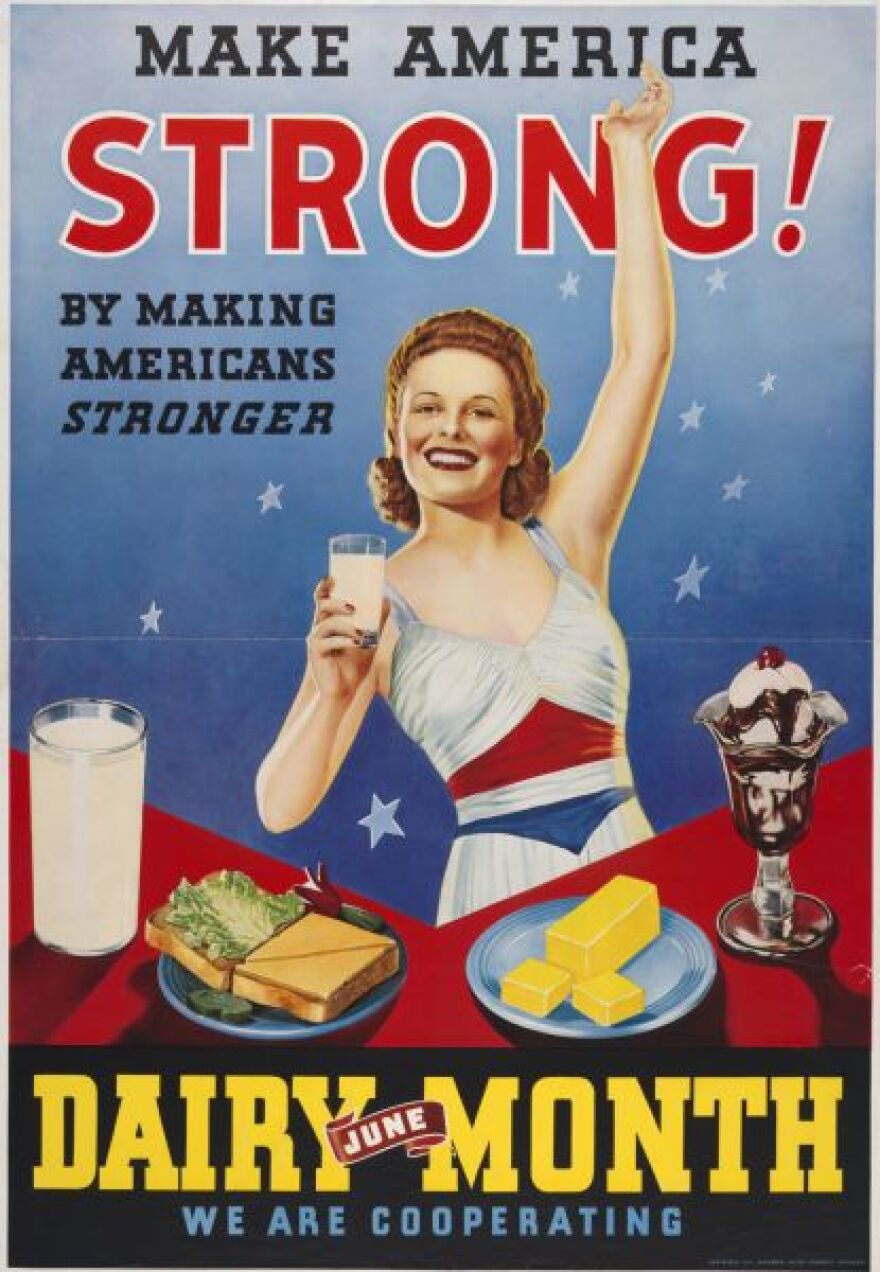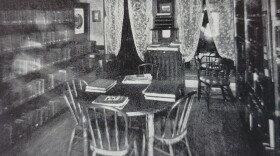In 1903, George Jenkins opened a small creamery in Rhinelander on the banks of the Pelican River. Jenkins’ Oneida Creamery was little different than others in the area at that time, except for one crucial distinction. Other creameries expected farmers to bring raw milk, cream, and eggs to them. In 1906, Jenkins got a jump on the competition by building a launch and making four trips a week down both the Pelican and Wisconsin Rivers. Instead of asking farmers to make a trip into town, Jenkins went to them and purchased directly. It was a tremendous convenience for the farmers, and it allowed the Oneida Creamery to become the largest in town.
Jenkins’ business model was so successful that it attracted outside investors, and in 1909 Fred and A.R. Meen of St. Paul, Minnesota, came to Rhinelander and purchased the creamery from Jenkins. Fred Meen became the new manager, and the business was renamed the Rhinelander Creamery & Produce Company. Meen immediately expanded the Rhinelander facility with the intent of capturing most of the area business. He installed modern ice cream making machinery in the plant and opened branch stations in neighboring towns. Not only was the creamery modernized with new pasteurizing machines, but the creamery store on Stevens Street was thoroughly upgraded.
Business was good, and under Meen the creamery installed new butter churns. Production went from 500 pounds at a churn to 1,500 pounds, which meant a capacity by the end of 1911 of three tons of butter every day. Butter came out in 100-pound blocks, which was then cut into the more manageable size of 1-pound bricks.
Ice cream was made with brine freezers and packed in 10-, 5-, or 3-gallon cans. It was distributed in wagons packed with ice as refrigeration did not come to the plant until 1917. Milk, ice cream, and butter were shipped out of Rhinelander and distributed across the Northwoods and the UP.
In the 1930s, as the Great Depression was threating business everywhere, the Rhinelander Creamery expanded beyond dairy and vegetables and opened a fruit distribution department. James Cleary joined the company as manager of the fruit department at this time, and customers in the Northwoods could now have fresh fruit deliveries.
Despite the expansion, it was the Great Depression, and farmers were not happy with the prices they were getting. There were rumblings throughout 1931 of farmers starting their own dairy cooperative. As it was, in 1935 the Rhinelander Creamery & Produce Company merged with the smaller Oneida Milk and Ice Cream Company to form a new firm called the Oneida Milk Company, with James Cleary as manager. Cleary became the owner, and by the 1950s much of the product was sold under the Cleary’s label.
The Consolidated Badger Cooperative, a dairy cooperative headquartered in Shawano, was founded in 1931. It was a remarkably successful enterprise and grew over the decades to overtake most of the Northwoods market. In 1958, Rhinelander’s dairy firm now largely known as Cleary’s merged with Consolidated Badger Cooperative. The Cleary’s label continued, but it was the end of an era for one of Rhinelander’s longest-lasting dairy concerns.









